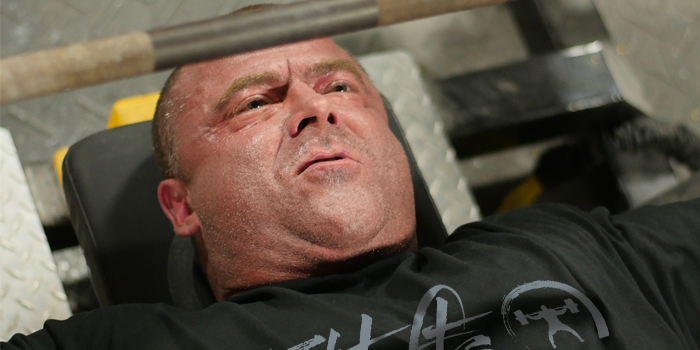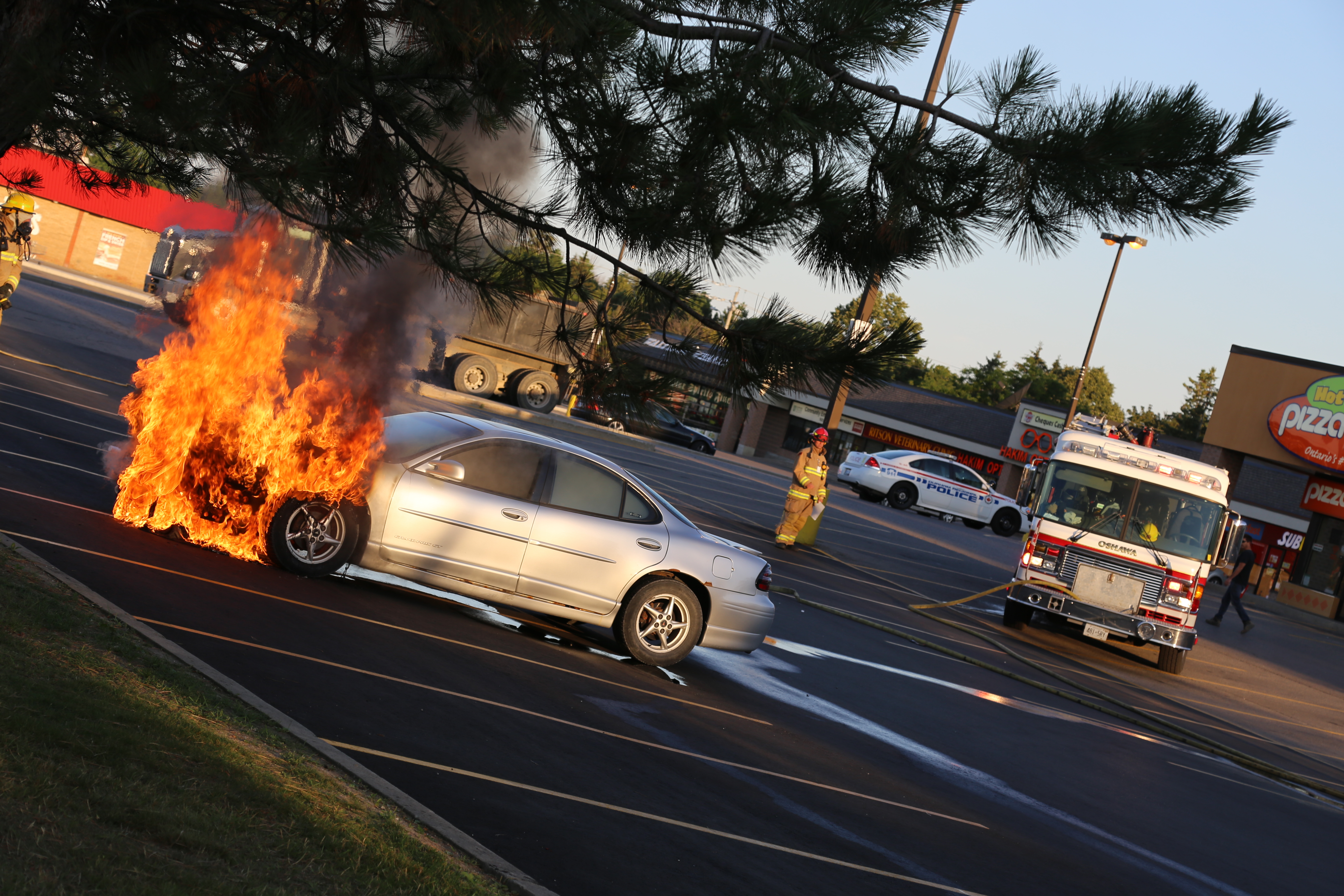
I have previously worked as a Police Officer for eleven years and currently work as a full-time Firefighter and Rescue Technician. Firefighters work in a team environment and rely on each other in life threatening conditions to keep each other safe. The team is only as strong as the weakest link and I will never be the weakest link!
The number one killer for professional firefighters is heart attacks, followed by a number of cancers from chronic exposure to toxic substances.
Working in the Emergency Services Professions can be physically and mentally demanding as well as extremely stressful under dangerous circumstances during most emergency incidents. Firefighters endure environmental conditions that can reach epic proportions during incidents throughout fire-ground operations. It can be stressful enough to attend an emergency incident, let alone perform duties which can include fire attack, primary and secondary search, rescue operations and body recovery. Lifting, twisting, crawling and dragging heavy equipment are part of the daily duties performed at any given time.
New construction materials and building construction burn a lot faster and reach higher temperatures much faster than older Century homes and pose more dangers to firefighters. Toxic substances from polymers and volatile organic compounds are emitted during ignition and remain present in the environment for long periods of time. Not only are carbon monoxide (CO2) readings high, new hydrogen sulphide (H2S) sensors now show that this lethal toxic substance remains on bunker gear after leaving a burning environment. Even after firefighters remove SCBA’s (Self Contained Breathing Apparatus), toxic substances can be inhaled, ingested or absorbed through the skin long after the fire is extinguished. Gusseted roof trusses and glued together wooden floor joists are susceptible to collapse quickly when exposed to heat and many firefighters have been critically injured falling through floors and roofs when structures collapse.
Going into a burning structure that can reach temperatures of 1000 degrees fahrenheit with the potential of flash over conditions (where all the material in a structure reaches a high enough temperature that everything in the structure can spontaneously combust) is expected of a firefighting crew. Wearing bunker gear, SCBA’s and carrying equipment, pulling charged hose lines and potentially rescuing victims or occupants in a smoke-filled environment with zero visibility can be extremely demanding and taxing, pushing any persons physical and mental ability to the limit.
Studies have been done measuring firefighters heart and breathing rates and have shown that firefighters can experience elevated heart rates just getting on an apparatus enroute to a potential emergency. Heart rates while working on fire-ground operations have shown many firefighters have exceeded their maximum heart rates (220 – age = MHR) for extended periods of time. This is stressful enough on fit individuals let alone anyone who may not be in the best condition.
Police Officers can also be involved in physical confrontations, highly stressful situations, stand-offs, gun calls, hostage incidents, high-risk vehicle stops, domestic disturbances and many more situations that can escalate within seconds.
All emergency service workers are subject to working a vast array of shift work that places additional stress on workers in already stressful environments.
RELATED Shift work, Sleep Deprivation and Training
I personally believe it’s imperative for emergency service workers to stay in top physical condition to be effective, reliable and be more resilient to help avoid injury; to be strong enough to rescue any of my crew who rely on me to save their life or the lives of others under emergency conditions. I plan to always come home to my family after every shift, which is my number one priority!
The Oshawa Fire Department services the City of Oshawa (Population 160,000) and offers mutual aid to surrounding municipalities. The department consists of 180 firefighters working on a four-platoon system out of six fire halls.
I have the privilege of working with several members on the Oshawa Fire Department that I consider my family of brothers and sister. Recently, I spoke to a few of them about what dangers they face working in the emergency service profession and what training they do to prepare for the rigorous demands required of them to perform their duties.
I spoke with three members of the Oshawa Fire Department to talk about their own training and why they feel it’s important for their profession:
Captain, Jim Lee: Age 45, 24 years service
Firefighter, Mario Perino: Age: 47, 17 years service
Firefighter, Jason Marden: Age 32, 9 years service
elitefts: What are some of the duties required of you working in your profession that you consider dangerous?
Jim Lee: Going from 0-100 to perform emergency duties. Running up stairs in full turnout gear. Doing search and rescue in extreme heat and undesirable conditions.
Jason Marden: Working in the emergency services field is quite unique. You’re always working in different, mostly undesirable environments. Your body has to get use to going from a state of calm to stressful/demanding work conditions at a moments notice. On the fire ground, you'll have to do a lot of heavy lifts, drags and carries in very undesirable conditions with poor footing. The work conditions are quite stressful and you are expected to perform in a calm professional manner so you really need to keep a cool head.
Mario Perino: The duties as a firefighter are physically demanding on a daily basis. Not only is it physically demanding, we expose ourselves to the inherent dangers of exposure to elements, toxic environments, fire, smoke, chemicals and a host of biohazards, hazardous materials and disease. Fire ground dangers are another risk we face. Building collapse, trip hazards, back-drafts and flashovers, to name a few.
elitefts: Do you think it’s important to be in top physical condition for your profession?
Jim Lee: I feel it is of the greatest importance for me to be in my best physical condition to do my job.
Jason Marden: I consider it a privilege to be in a position where the public relies on you for help. I personally feel it's a duty to stay in shape for this profession. It's a very physical job in very undesirable conditions. Being fit helps yourself, your coworkers and the public. It's also a great way to release the stresses you acquire on the job.
Mario Perino: I think it is extremely important to keep in the best possible shape to be a Firefighter. It’s the type of occupation where keeping busy with daily duties around the hall can be considered “non-busy” times, but once the tones sound and we hit the ground running. I like to think of our pace as 0-100 mph! Now add the physical attributes to task: immediately donning 70 pounds of gear before you commence putting out a fire or extricating a person from a vehicle in 35C heat.
elitefts: What training do you perform to stay physically fit for your profession?
Jim Lee: My training consists of strength training and metabolic conditioning: Olympic lifts, bench press, deadlifts, squats and high intensity intervals using weights and sprint work. I also do unconventional exercises like rope climbs. In the last few months I've introduced atlas stones into my workouts. I swim and try to get a run in one to two times per week. My goal is simple: be stronger than the fastest guy and faster than the strongest.
Jason Marden: I mix things up from different disciplines, whether it's kettlebell training, Olympic lifting, powerlifting, atlas stones, met cons, interval training or just running. As long as my training takes me outside of my comfort zone and makes me stronger and less prone to injury. I like to enter into competitive adventure races annually so that I get my ass handed to me and know where I need to improve (hills aren't my friend).
Mario Perino: My training consists of a mix of strength, core, cardio and dynamic training. I like to shake things up and challenge myself with new training disciplines every so often. It also helps to have friends on the job who tend to be in a heck of a lot better shape than myself to pick up some new training advice from. I think strength training and metabolic training both play a huge roll when applied to our occupation. I have also competed in several triathlons and Firefit Combat Challenge events to stay in good physical condition.
elitefts: Do you feel strength training or metabolic conditioning takes priority or a balance of both?
Jim Lee: I think it's important to do both types of workouts for my profession. It's okay to be strong but if you don't have endurance to maintain that during an emergency situation, then you become ineffective and that hurts the team.
Jason Marden: Definitely a balance of both strength training and metabolic conditioning. You must be strong for this job. There has been many times in my career that I feel that I've been pushed past my max under pressure at a call. It's good to be strong and prepared.
You also need to be flexible and conditioned. You'll have to work in conditions where your air supply is limited to what's to the bottle on your back. Ideally, you'll want to make that last as long as possible for yourself and your crew. Being flexible helps when you need to crawl around rooms in the smoke to feel for victims and also helps prevents injuries.
Mario Perino: A balance of both. Strength training is exercising with the goal of increasing your physical strength, which helps with the heavy loads that we put on our bodies during a call. The conditioning or metabolic training comes into play when increasing your cardiovascular system’s performance, especially important for climbing stairs to a high-rise with bunker gear and firefighting equipment. This is also important for long duration calls that run through the night and endurance is vital.
elitefts: In your opinion, should emergency service members have to maintain a certain level of fitness and do you think they should be tested yearly to ensure they’re maintaining that level?
Jim Lee: That's a tough question to answer. I know our provincial and international associations are against such testing. Right now I'm fit and healthy but I don't know what the future holds for me. This is a young man's job for sure. I would hate to work 25+ years and then be told that I can't do the job anymore because I failed a physical component. Testing would have to be non-punitive in my opinion.
Jason Marden: In my opinion, it's entirely up to the member. Everyone knows that it's a physical job. You don't have to be the next Mr. Olympia, but it just helps everyone to be in decent shape. The stats are out there; cardiac arrest is the number one killer of firefighters. Being out of shape at this job is like taking a couch potato and putting them into the Crossfit games: They wouldn't last too long going from 0-100 at a moment's notice. It's the same thing on this job, except you can't opt out. You’re expected to be professional and perform under pressure. Maintaining a level of fitness will just help everyone (yourself, co-workers, the public and your family) when you need to work in these conditions. There's no excuse for being out of shape. The department supplies us with great gyms and equipment to maintain our fitness.
Mario Perino: In my opinion, emergency services personnel should have the mindset to keep in the best possible shape.Their lives depend on it, but so do the lives of others at an emergency. It should be mandatory with testing, only to ensure that we have a benchmark to monitor our physical fitness. This would give positive incentive to personnel to exercise and maintain a healthy lifestyle. The onus is up to the individual currently, to keep in top physical form.
It is a privilege and an honor for me to work in the emergency service profession where you have endless opportunities to help people and the ability and training to save lives. Your safety and the safety of everyone you work with will rely on each member of the team to perform. There are numerous ways to train and stay physically fit as demonstrated by speaking with Jim, Jason and Mario. I wouldn’t hesitate to go with anyone of them into any dangerous emergency situation because I have trust in their abilities they will go above and beyond the call of duty when called upon. I trust them with my life and they trust me with theirs. The public depends on us and we depend on each other.
“I will never be the weakest link.”
IAFF: Heart Disease in the Fire Service
Cancer Studies
Photos courtesy of Colin Williamson
















3 Comments